hnRNP L controls HPV16 RNA polyadenylation and splicing in an Akt kinase-dependent manner
- PMID: 28934469
- PMCID: PMC5766200
- DOI: 10.1093/nar/gkx606
hnRNP L controls HPV16 RNA polyadenylation and splicing in an Akt kinase-dependent manner
Abstract
Inhibition of the Akt kinase activates HPV16 late gene expression by reducing HPV16 early polyadenylation and by activating HPV16 late L1 mRNA splicing. We identified 'hot spots' for RNA binding proteins at the early polyA signal and at splice sites on HPV16 late mRNAs. We observed that hnRNP L was associated with sequences at all HPV16 late splice sites and at the early polyA signal. Akt kinase inhibition resulted in hnRNP L dephosphorylation and reduced association of hnRNP L with HPV16 mRNAs. This was accompanied by an increased binding of U2AF65 and Sam68 to HPV16 mRNAs. Furthermore, siRNA knock-down of hnRNP L or Akt induced HPV16 gene expression. Treatment of HPV16 immortalized keratinocytes with Akt kinase inhibitor reduced hnRNP L binding to HPV16 mRNAs and induced HPV16 L1 mRNA production. Finally, deletion of the hnRNP L binding sites in HPV16 subgenomic expression plasmids resulted in activation of HPV16 late gene expression. In conclusion, the Akt kinase inhibits HPV16 late gene expression at the level of RNA processing by controlling the RNA-binding protein hnRNP L. We speculate that Akt kinase activity upholds an intracellular milieu that favours HPV16 early gene expression and suppresses HPV16 late gene expression.
© The Author(s) 2017. Published by Oxford University Press on behalf of Nucleic Acids Research.
Figures
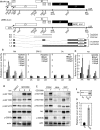
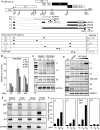
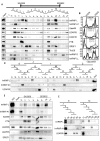
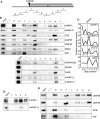

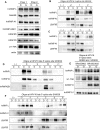

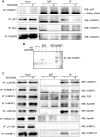
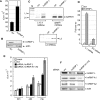
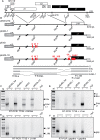
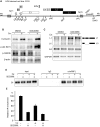

Similar articles
-
Heterogeneous Nuclear Ribonucleoprotein A1 (hnRNP A1) and hnRNP A2 Inhibit Splicing to Human Papillomavirus 16 Splice Site SA409 through a UAG-Containing Sequence in the E7 Coding Region.J Virol. 2020 Sep 29;94(20):e01509-20. doi: 10.1128/JVI.01509-20. Print 2020 Sep 29. J Virol. 2020. PMID: 32759322 Free PMC article.
-
Suppression of HPV-16 late L1 5'-splice site SD3632 by binding of hnRNP D proteins and hnRNP A2/B1 to upstream AUAGUA RNA motifs.Nucleic Acids Res. 2013 Dec;41(22):10488-508. doi: 10.1093/nar/gkt803. Epub 2013 Sep 5. Nucleic Acids Res. 2013. PMID: 24013563 Free PMC article.
-
Heterogeneous Nuclear Ribonucleoprotein C Proteins Interact with the Human Papillomavirus Type 16 (HPV16) Early 3'-Untranslated Region and Alleviate Suppression of HPV16 Late L1 mRNA Splicing.J Biol Chem. 2015 May 22;290(21):13354-71. doi: 10.1074/jbc.M115.638098. Epub 2015 Apr 15. J Biol Chem. 2015. PMID: 25878250 Free PMC article.
-
Splicing and Polyadenylation of Human Papillomavirus Type 16 mRNAs.Int J Mol Sci. 2017 Feb 9;18(2):366. doi: 10.3390/ijms18020366. Int J Mol Sci. 2017. PMID: 28208770 Free PMC article. Review.
-
Papillomavirus transcripts and posttranscriptional regulation.Virology. 2013 Oct;445(1-2):187-96. doi: 10.1016/j.virol.2013.04.034. Epub 2013 May 23. Virology. 2013. PMID: 23706315 Review.
Cited by
-
Heterogeneous Nuclear Ribonucleoprotein A1 (hnRNP A1) and hnRNP A2 Inhibit Splicing to Human Papillomavirus 16 Splice Site SA409 through a UAG-Containing Sequence in the E7 Coding Region.J Virol. 2020 Sep 29;94(20):e01509-20. doi: 10.1128/JVI.01509-20. Print 2020 Sep 29. J Virol. 2020. PMID: 32759322 Free PMC article.
-
A novel HPV16 splicing enhancer critical for viral oncogene expression and cell immortalization.Nucleic Acids Res. 2024 Jan 11;52(1):316-336. doi: 10.1093/nar/gkad1099. Nucleic Acids Res. 2024. PMID: 37994701 Free PMC article.
-
HPV16 and HPV18 Genome Structure, Expression, and Post-Transcriptional Regulation.Int J Mol Sci. 2022 Apr 29;23(9):4943. doi: 10.3390/ijms23094943. Int J Mol Sci. 2022. PMID: 35563334 Free PMC article. Review.
-
The Role of RNA Splicing Factors in Cancer: Regulation of Viral and Human Gene Expression in Human Papillomavirus-Related Cervical Cancer.Front Cell Dev Biol. 2020 Jun 12;8:474. doi: 10.3389/fcell.2020.00474. eCollection 2020. Front Cell Dev Biol. 2020. PMID: 32596243 Free PMC article. Review.
-
Ribosome profiling reveals that post-transcriptional control of Nalf1 by heterogeneous nuclear ribonucleoprotein L is required for paclitaxel-induced neuropathic pain.Pain. 2025 Apr 2;166(9):2091-2102. doi: 10.1097/j.pain.0000000000003577. Pain. 2025. PMID: 40839605
References
-
- Chow L.T., Broker T.R., Steinberg B.M.. The natural history of human papillomavirus infections of the mucosal epithelia. APMIS. 2010; 118:422–449. - PubMed
-
- Schiffman M., Doorbar J., Wentzensen N., de Sanjose S., Fakhry C., Monk B.J., Stanley M.A., Franceschi S.. Carcinogenic human papillomavirus infection. Nat. Rev. Dis. Primers. 2016; 2:16086. - PubMed
-
- Mighty K.K., Laimins L.A.. The role of human papillomaviruses in oncogenesis. Rec. Results Cancer Res. 2014; 193:135–148. - PubMed
-
- Walboomers J.M., Jacobs M.V., Manos M.M., Bosch F.X., Kummer J.A., Shah K.V., Snijders P.J., Peto J., Meijer C.J., Munoz N.. Human papillomavirus is a necessary cause of invasive cervical cancer worldwide. J. Pathol. 1999; 189:12–19. - PubMed
MeSH terms
Substances
LinkOut - more resources
Full Text Sources
Other Literature Sources

